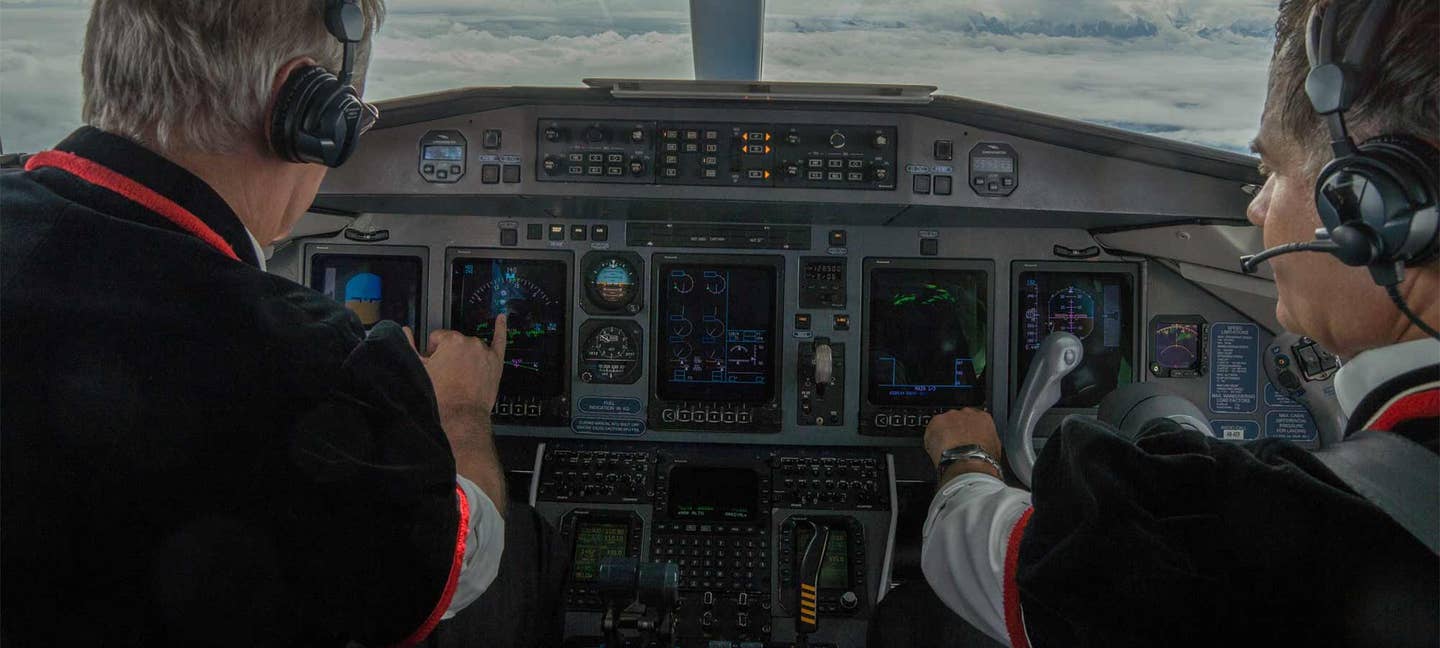
When I was a child there was an apple tree in our front yard. It was a joy. In the summertime you could walk up to that tree, shake it and feast on those delicious loose apples that were just about ready to fall to the ground on their own but hadn’t yet. Sometimes, if you were lucky, you could catch them in midair. For whatever reason, this sunny thought stayed with me. Now, years later, I use the analogy to provide an image to help my students consider the vigor required in thinking deeply through each waypoint on an IFR flight.
To think ahead, consider the waypoint and “shake the tree” to look for mistakes that are about to happen. The trick in instrument flying (if not all flying) is to be one step ahead of the airplane, just one, and to think deeply about that event. Being too far in front of the airplane is distracting and almost as bad as being behind the plane.
Instrument pilots must think ahead, one event at a time, and consider everything to be done, and it helps to employ a specific tool. I use an old mnemonic in whole new way. The five T’s: TURN, TIME, TWIST, THROTTLE and TALK. I use them as a mechanism for thinking in front of the airplane, as a way to think deeply about the next event. Because it’s not a secret in instrument flying that if you can effectively get your mind in front of the airplane and think through the next event before you get there you will catch most, if not all, of your mistakes before they occur.
All of this came together in a perfect learning moment on a recent training flight. We were simulating IFR, with myself, my student Jim, and another IFR student riding along in the back seat. Jim is flying a Garmin G1000-equipped Cessna 172, and is very close to being ready for a check ride. Today we were going through everything one last time. Three different approaches, holding, circling the whole nine yards. I wanted to confirm that he could hand fly. I also wanted to confirm that he could manage the extensive automation in the airplane. It was during our second approach that a crystalline teaching moment presented itself for learning.
On this approach Jim was allowed to use the autopilot. In fact, it was required by me because we hand flew the last approach, an ILS, and I wanted to confirm he had good automation management on this LPV approach. If you don’t program the autopilot properly it will not capture the glidepath. I wanted to see that he knew that. We were, after all, flying a WAAS-capable airplane with the Garmin GFC 700 autopilot (that’s the fancy integrated one for anybody that doesn't know).
The autopilot was flying the airplane and the CDI was dead center as we approached the final approach fix. I was watching the glidepath indication moving steadily down from it’s top resting position, indicating we were getting close to intercept when Jim turned to me with a big smile on his face and said, “Dude, this is way too easy.”
He picked a perfect time to say it because I was just scanning the panel to make sure everything looked good when I noticed he had failed to press the APR button on the autopilot. This meant the autopilot was still in NAV mode. This meant the autopilot would ignore the glidepath receiver and not begin the descent toward the runway. I realized this at almost the exact moment that Jim declared this was way too easy. The learning was clear. He hadn’t thought in front of the airplane, or at least not deeply enough to fix the mistake before it occurred.
In relation to a moving airplane there are only three places you can be. Behind it, with it, or ahead of it. Most pilots fly right along with the airplane - performing mnemonics like the 5T’s as they arrive at each fix. This isn’t enough. In our case, once the glidepath indication arrived at intercept and we missed it, it was too late for the autopilot to catch it. The autopilot will not dive at the glideslope and neither should you. It was a missed approach.
In instrument flying we must use energy to think in front of the airplane, and think deeply enough to make sure there are no loose apples on the tree. Will there be a turn when I get there? Will there be a time to record, or start? Is there anything to twist, tune, identify, program, activate, etc. (shake hard here)? Throttle - and this is where Jim failed - is there a reason to slow down or go down? If so, how will that happen? Finally, Talk: Is there anything to say to anybody?
We could have easily walked away from this flight thinking that the learning was to always make sure the APR button is pressed before you get to the final approach fix. While that’s a good little lesson, the real lesson is bigger. There are countless mistakes that can made in IFR flying. The real lesson on this flight was to catch them before they occur and to consider a system for thinking ahead of the airplane that will act as a safety net and catch those apples, before they hit the ground.
Jason Miller is the creator of The Finer Points of Flying and a CFII with more than 20 years of aviation experience and thousands of hours of instruction given. He is a member of the FAA safety team, a speaker for AOPA’s Air Safety Institute and was nominated by the FAA for the 2009 Flight Instructor of the Year Award.

Sign-up for newsletters & special offers!
Get the latest FLYING stories & special offers delivered directly to your inbox






